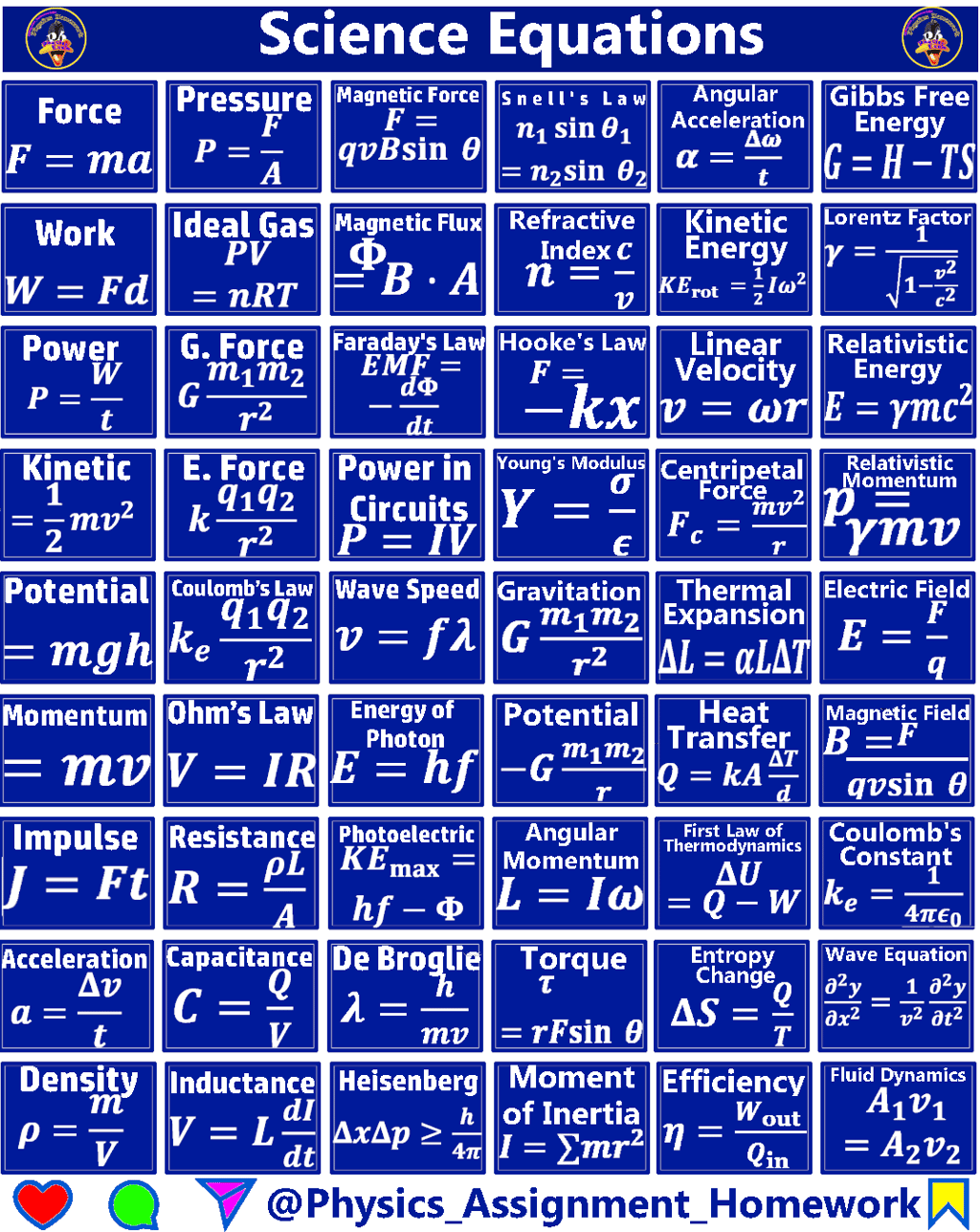Science Equations
Blog post description.
3/10/20251 min read


Newton's Second Law establishes the relationship between force, mass, and acceleration, forming the foundation of classical mechanics. Work is defined as the product of force and distance, while power quantifies the rate at which work is done. Kinetic energy represents the energy of a moving object, whereas gravitational potential energy depends on an object's height above the ground. Momentum describes mass in motion, with impulse measuring the change in momentum. Acceleration indicates the rate of change of velocity, while density expresses mass per unit volume. Pressure is the force applied per unit area, and the ideal gas law connects pressure, volume, and temperature in a gas.
Forces play a crucial role in physics, from gravitational to electrostatic interactions. Gravitational force describes the attraction between two masses, while electrostatic force governs the interaction between charges. Coulomb’s law quantifies this electrostatic force, and electrostatic potential energy measures the work required to bring two charges closer. Electric field strength expresses force per unit charge, whereas electric potential represents energy per unit charge. Electric charge is the fundamental quantity of electric energy. Ohm's law establishes the relationship between current, voltage, and resistance, with resistance depending on material properties, length, and cross-section. Electric power, in turn, measures energy transfer per unit time.
Modern physics introduces wave-particle duality and relativity. De Broglie’s wavelength links a particle’s momentum to its wavelength, and photon energy is determined by its frequency. Mass-energy equivalence, given by Einstein’s famous equation, unifies mass and energy. Angular displacement measures rotational motion, with angular velocity and angular acceleration defining its rate of change. The period of a pendulum depends on its length and gravitational acceleration. Centripetal acceleration directs objects toward the center of circular motion, while torque quantifies rotational force. Stress and strain describe material deformation, with Young’s modulus linking these properties to determine a material's elasticity.
Solutions
Expert assistance for your physics lab assignments.
Support
Help
© 2025. All rights reserved.
